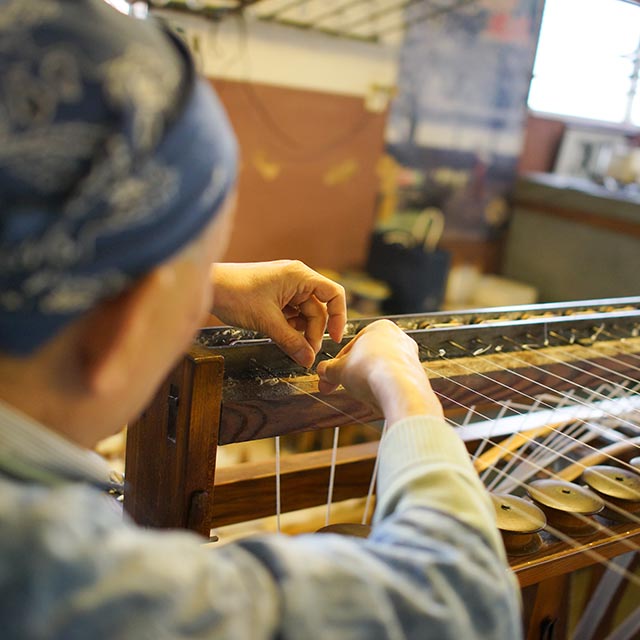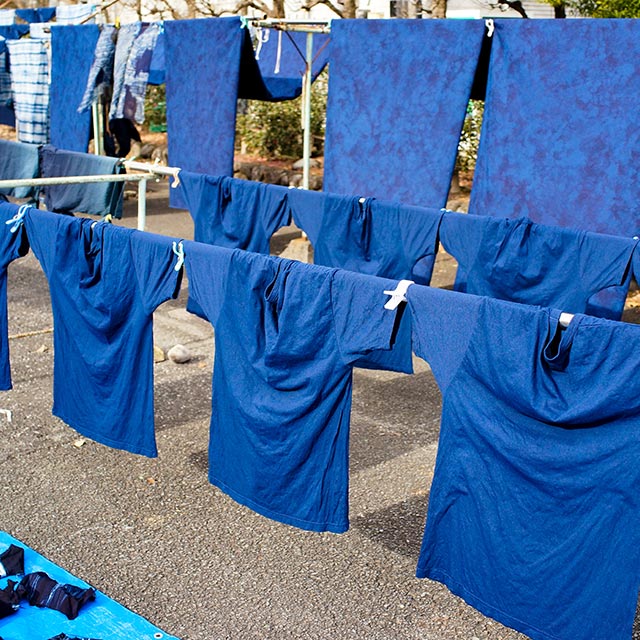Dyeing


- Short Ver.
- Long Ver.
Tama’s Dyeing
The Tama area was once known as a region where textile production was thriving. During the Edo period, many farmers raised silkworms, and it is said that cocoons and textiles were valuable cash income. A woven fabric called Ome stripe was produced in the Edo period and became famous all over the country. When textiles prosper, dyeing products that dye threads and silk are inevitably required. A result, its own dyeing culture in the Tama region has evolved. Please touch on the three dyeings that still remain, their techniques, and their “Chic”. In honor of the craftsmen who have preserved and inherited the culture here for over 100 years.
Recommended information

Itokobo “Mori” (Thread Workroom)
- Ome City
- The Culture of the Tama area
“Kurohachijo” is a silk fabric from the Akigawa River basin, which was popular nationwide during the Edo period. This technique of dyeing with nuts called Alnus firma and mud from the Akigawa River was once lost in the Meiji era. At the thread workroom “Itokobo Mori” in Akiruno City, the technique that has been forgotten over so much time has been reactivated by self-taught craftsmen and is now exhibited and sold under the name “Itsukaichi Dyeing”. Why don’t you get the stylish black that once helped color the world of the geisha and has been revived in the present age in Itsukaichi?
1129 Ina, Akiruno City Tokyo, 190-0142

Kosoen
- Ome City
- The Culture of the Tama area
“Kosoen” is an indigo dyeing studio located about a 20-minute walk from Ome Station on the JR Ome Line.The indigo dyeing solution of Kosoen is made by a method called “natural indigo ash juice fermentation”. It is an ancient Japanese manufacturing method used since the Edo period, and uses only natural ingredients without any chemicals. Though the dying process takes time, the indigo becomes more reddish and shines with each dyeing.The deep “indigo”, which is different from “blue” and “navy blue” is called “Japan Blue”, because of its beauty, and it is said that it surprised the world when first seen. Indigo dyeing experience classes are also held at Kosoen.Why don’t you take a closer look at the indigo color that impressed the world?
8-200 Nagabuchi, Ome City, Tokyo 198-0052

Okuda Print
- Hachioji City
- The Culture of the Tama area
Okuda Print which moved from Katsushika Ward to Nakanokami-cho in Hachioji City in 1942, mainly dyes and finishes in silk-screen printing which prints one color at a time on the fabric.
Mr. Okuda, who runs this company, has a strong inquiring mind for manufacturing. He has always challenged new fields rather than abandoning tradition as outmoded by pursuing new textile expressions with designers and making proposals for art, interiors, space production etc.
31-12-14 Nakanokami-cho, Hachioji City, Tokyo 192-0041


